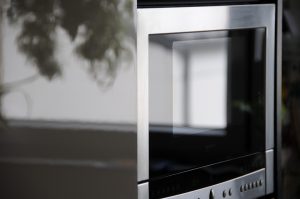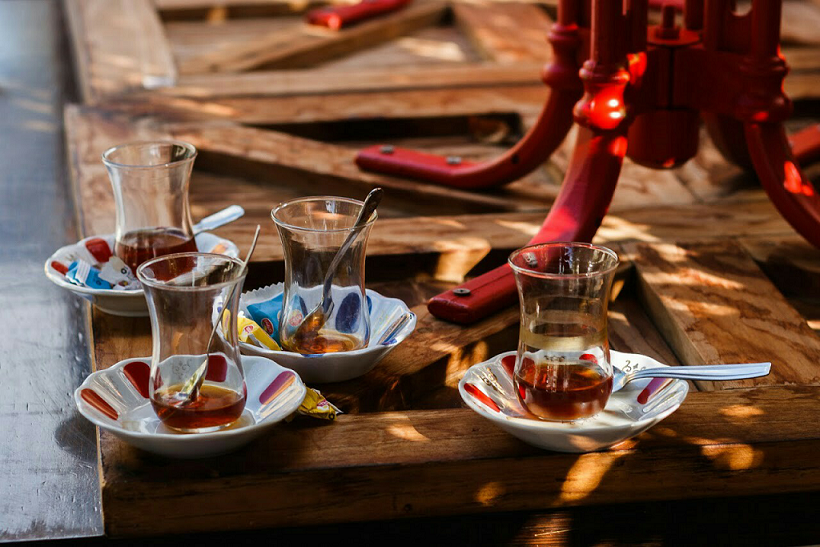Ever since Asterix put the leaves given him by a Phoenician merchant into the hot water that the Bretons drank, and until recently, the way for the preparation of good tea has been exclusive to the British.

Traditional preparation of tea
According to Carol, my English teacher, the preparation of a good tea is as follows:
- Heat water in a kettle. Here you can see how to choose a good kettle.
- Then, pour some hot water into a mug to warm it up and dispose of it
- After that, place the tea leaves or tea bag in the cup
- And finally, pour the hot water into the cup and leave it for a few minutes depending on the type of tea.
Scientific preparation of tea
However, after years of research in the extraction of components from natural products, Dr. Quan Vuong, from the University of Newcastle, in Australia, has concluded that the best way to prepare a good tea is with the use of the microwave and not only that but also adding the tea leaves in the microwave for a few seconds!!!!. According to Dr. Vuong, the way to prepare a good tea would be as follows:
- Pour some hot water in a cup with the tea leaves or the tea bag.
- Then, heat in the microwave for about 30 seconds at medium power
- And finally, leave 1 minute and remove the tea from the cup

Despite the fact that Dr. Vuong had already reached this conclusion years ago, until these days it has not been expanded on social networks, due to the television series Broadchurch, where the actor David Tennant making himself tea with the use of a microwave. With the premiere of the episode, numerous complaints and comments flooded social networks, how could you extract a tea in the microwave?
In addition, according to the research of Dr. Vuong, the use of the microwave improves the separation of some of the main components of the flavor of tea such as caffeine, theanine, and some phenolic compounds, up to 80%. In addition, some of these substances such as theanine, or catechin phenolic compounds, or flavonoids, have been shown to have numerous antioxidant effects that are beneficial to health, including cardiovascular diseases and cancer (Vuong, 2014). Thus, the use of the microwave would not only enhance the flavor of the infusion but also the benefits it would bring to our health.
Solid-liquid extraction
In chemical engineering research, one of the main stages for the separation of components of solid materials is through the unit operation of solid-liquid extraction. In this operation, the transfer of the components from the solid to the liquid depends mainly on two mechanisms: (i) the solubility of the substance being extracted and (ii) the diffusion or transport mechanism within the solid and the liquid. The solubility depends fundamentally on the liquid with which it is being extracted and, on the temperature, the higher the temperature, the greater the solubility. However, in the case of tea, the temperature and the liquid almost remain unchanged, so we must improve the diffusion process instead of the solubility process, and it is precisely the diffusion mechanism that can be improved with the use of microwave extraction processes or even through ultrasound processes.
Curiosity
The word leaching, solid-liquid extraction whose objective is to separate components from a solid to a liquid, depending on the application, is sometimes called percolation. In this sense, some of the coffee machines are called percolation machines.
From this perspective, it is believed that the name of the café from the Friends series, Central Perk, is inspired by the double meaning of Central Park and the coffee obtained by percolation.
Conclusion
Forgetting the milk controversy, which can be used for another post, I encourage you to try both methods of preparing a tea at home and decide which is the best for you. The enjoyment of each one can be different.
References
https://www.indy100.com/article/tea-cup-microwave-brew-pg-tips-yorkshire-twitter-outrage-7678466
http://www.mindfood.com/article/the-best-way-to-make-a-cup-of-tea/
https://www.newcastle.edu.au/profile/vanquan-vuong
- Vuong, QV. 2014. Epidemiological Evidence Linking Tea Consumption to Human Health: A Review. Critical Reviews in Food Science and Nutrition, 54: 523-536.
- Vuong QV, Bowyer MC, Roach PD. 2011. L‐Theanine: properties, synthesis and isolation from tea. Journal of the Science of Food and Agriculture, 91(11): 1931-1939.


Thank you very much, Samara
Thank you very much, Danilo
Thank you so much